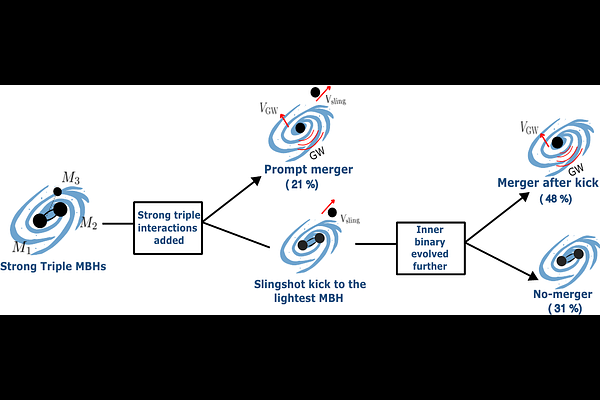Mergers and Recoil in Triple Massive Black Hole Systems from Illustris

Mergers and Recoil in Triple Massive Black Hole Systems from Illustris
Pranav Satheesh, Laura Blecha, Luke Zoltan Kelley
AbstractMassive black hole binaries (MBHBs) form through galaxy mergers and are among the loudest sources of gravitational waves (GWs) in the universe. If the binary inspiral time is long, a subsequent galaxy merger can introduce a third black hole, forming a triple system. In the Illustris cosmological simulation, 6% of MBHBs form such triples at parsec scales, where strong three-body interactions are likely. We apply results from numerical simulations of triple MBHs to strong triples identified in Illustris to assess their impact on MBH mergers and recoils. We find that strong triple interactions increase the overall merger fraction by 4%. Including triple interactions raises the merger fraction of MBHs in strong triple systems from 40% to 69%, relative to modeling binary evolution in isolation. Furthermore, massive, major mergers are over three times more likely to be facilitated by strong triple interactions than mergers in general. We also compare GW recoil kicks to gravitational slingshot kicks from triple interactions. Both mechanisms can produce kicks exceeding host escape speeds, ejecting MBHs and producing wandering or offset black holes. Although slingshots yield the highest velocity kicks, GW recoils dominate the ejected population when assuming random MBH spin orientations. Under this assumption, ejections from GW recoil and slingshot kicks reduce the total number of mergers by 6%. Our results highlight the impact of strong triple dynamics and GW recoils on MBH evolution and support their inclusion in cosmological simulations.